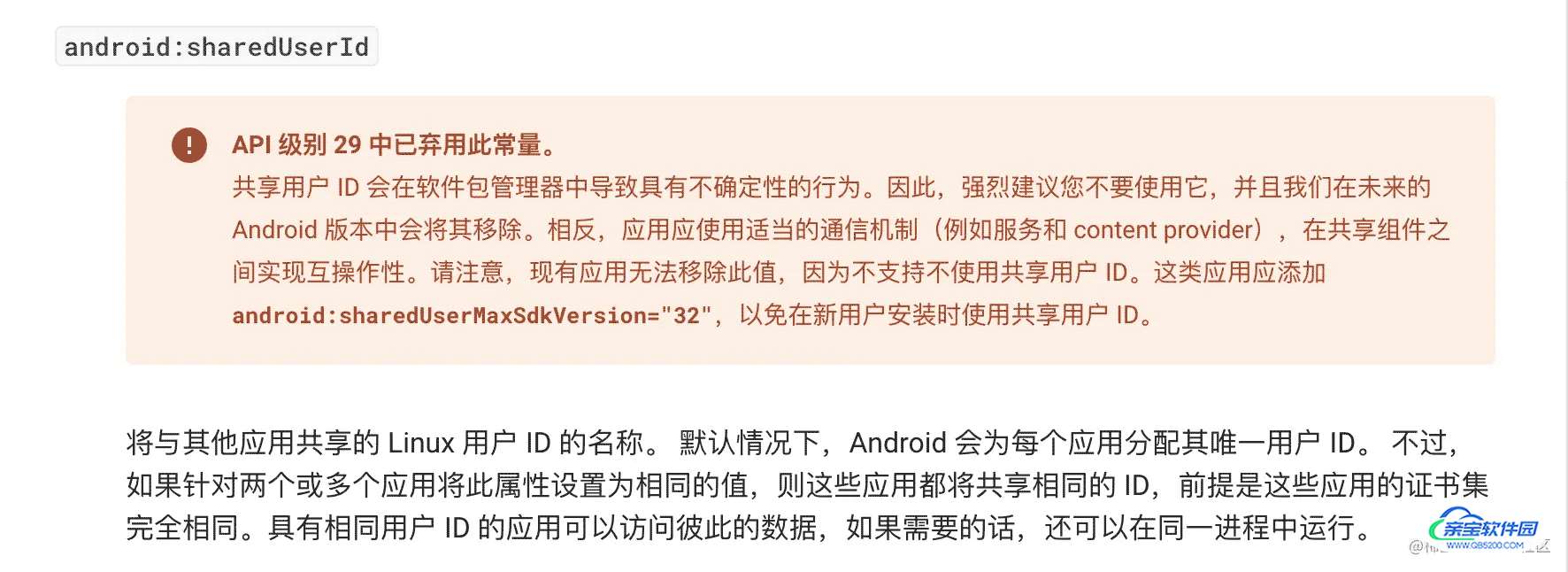android sharedUserId 使用知识盲点解析
Exploring 人气:01. 背景
由于在工程中使用了 SPI 机制,通过 ServiceLoader 的配合来完成模块间的通信。但是突然收到线上客户反馈使用了 SDK 后无法进行模块加载,导致部分功能异常。
2. 分析排查
借助客户提供的测试包进行 debug 调试,发现在调试到 ServiceLoader.load() 方法时确实无法加载到对应的模块配置。查看 ServiceLoader 的状态信息如下:

其中的 loader 是 LoadApk$WarningContextClassLoader 对象,而正常情况下是 DexPathClassLoader。
2.1 查看 ServiceLoader.loader 定义
ServiceLoader API 文档:developer.android.com/reference/j…

根据接口定义 load 方法会根据指定的 serviceType 创建新的 ServiceLoader 对象返回,ServiceLoader 内部根据当前线程对应的 ContextClassLoader 对象去加载配置,所以到这里可以分析到 load 方法的加载结果会受 ContextClassLoader 的影响,进一步推理可能收到插件化、热修复等框架影响,确认后并没有使插件化、热修复等框架。
2.2 WarningContextClassLoader 为何物?
查找 Android famework 源码,找到 WarningContextClassLoader 是定义在 LoaderApk 文件中的内部类(部分版本是 ActivityThread 类中的内部类)。
private void initializeJavaContextClassLoader() {
IPackageManager pm = ActivityThread.getPackageManager();
android.content.pm.PackageInfo pi =
PackageManager.getPackageInfoAsUserCached(
mPackageName,
PackageManager.MATCH_DEBUG_TRIAGED_MISSING,
UserHandle.myUserId());
if (pi == null) {
throw new IllegalStateException("Unable to get package info for "
+ mPackageName + "; is package not installed?");
}
/*
* Two possible indications that this package could be
* sharing its virtual machine with other packages:
*
* 1.) the sharedUserId attribute is set in the manifest,
* indicating a request to share a VM with other
* packages with the same sharedUserId.
*
* 2.) the application element of the manifest has an
* attribute specifying a non-default process name,
* indicating the desire to run in another packages VM.
*/
boolean sharedUserIdSet = (pi.sharedUserId != null);
boolean processNameNotDefault =
(pi.applicationInfo != null &&
!mPackageName.equals(pi.applicationInfo.processName));
boolean sharable = (sharedUserIdSet || processNameNotDefault);
ClassLoader contextClassLoader =
(sharable)
? new WarningContextClassLoader()
: mClassLoader;
Thread.currentThread().setContextClassLoader(contextClassLoader);
}
private static class WarningContextClassLoader extends ClassLoader {
private static boolean warned = false;
private void warn(String methodName) {
if (warned) {
return;
}
warned = true;
Thread.currentThread().setContextClassLoader(getParent());
Slog.w(ActivityThread.TAG, "ClassLoader." + methodName + ": " +
"The class loader returned by " +
"Thread.getContextClassLoader() may fail for processes " +
"that host multiple applications. You should explicitly " +
"specify a context class loader. For example: " +
"Thread.setContextClassLoader(getClass().getClassLoader());");
}
...
}
在应用创建时会调用 ActivityThread 类中的 attach 方法中,attach 方法进而调用 LoadedApk 类中的 makeApplicationInner() 用于创建对应的 Application 对象。在 makeApplicationInner() 方法的内部调用 initializeJavaContextClassLoader 方法创建对应的 ContentClassLoader 对象,在 initializeJavaContextClassLoader 方法的内部可以看到,如果当前 App 在 manifest 中设置 sharedUserId 属性,则当前应用使用的是 WarningContextClassLoader。下面我们就是查看 App 中的配置。

最终验证了我们的猜想,使用 demo 设置 sharedUserId 属性问题可正常复现。
2.3 sharedUserId 属性
查看官方文档该属性配置 API 级别 29 中已弃用此常量。共享用户 ID 会在软件包管理器中导致具有不确定性的行为。因此,强烈建议您不要使用它,并且我们在未来的 Android 版本中会将其移除。

2.总结
排查问题还是比较费神,在没有明显错误的时候,只能针对每个可疑的信息去分析,期望发现蛛丝马迹。
加载全部内容